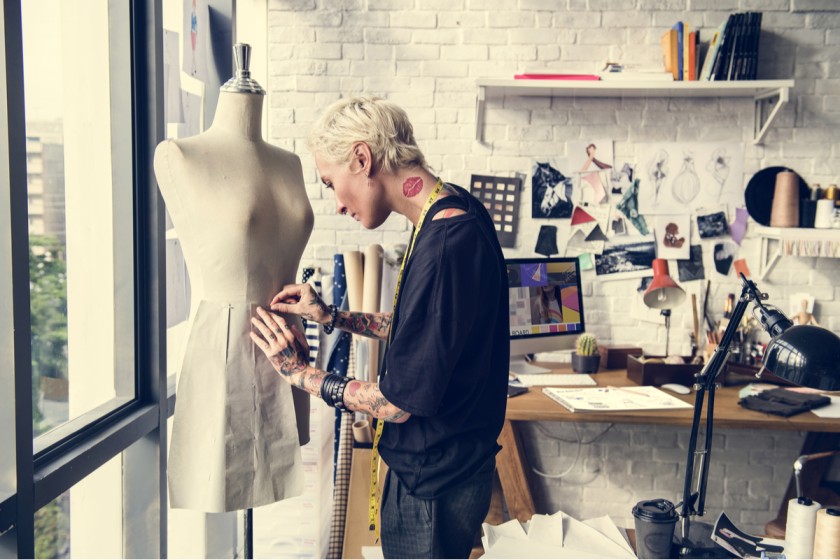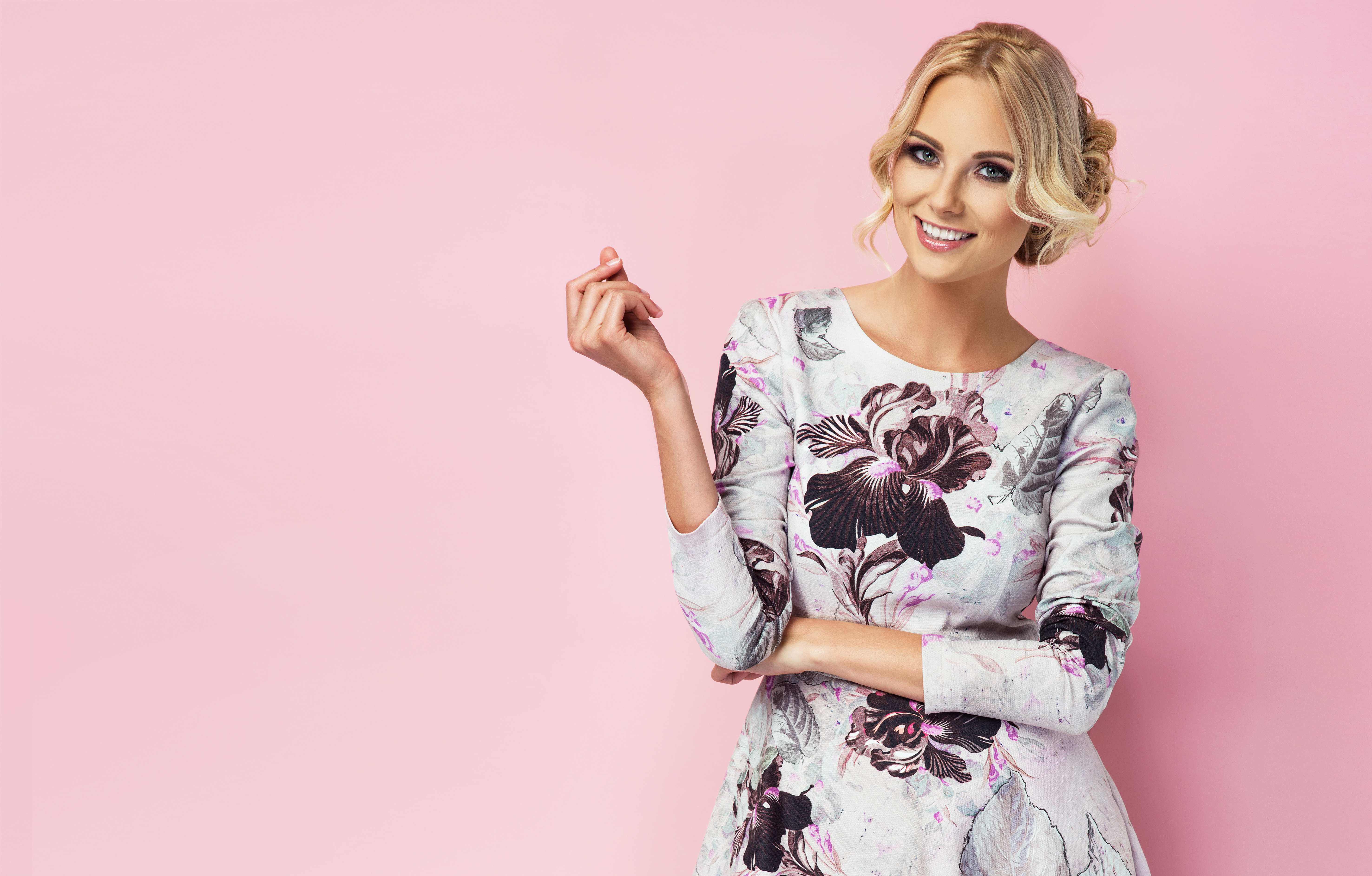5 Steps to Achieve Success as a Fashion Designer



“From the first time I was very young, I had been seeing posters and ads in magazines about the Fashion Institute of Technology (FIT) in New York. I had only dreamed about being accepted into their design program and once accepted, I never gave another school a thought. To me, they were the “gold standard.” Widely recognized all over the world, I knew it would be a selling feature on my resume.” Diane Mahood, Creative Technical Designer, Sweaters and Knits, White House/Black Market, Ft. Myers, Florida, USA
Fashion designing is a popular field especially among youth. With the professionalization of how people think about fashion, people are wanting to study and research more about the latest fashion trends. To become a successful fashion designer, an eye for good design and colour is as important as knowing the right cutting and sewing techniques. The Fashion Design Job market is blooming in Paris, Tokyo and Mumbai and most enthusiasts go to these cities to land up good jobs. The above mentioned cities are tier one for fashion designing. Tier two cities include Montreal which is also considered to be the hub of fashion designing. Princess Diana, Rihanna, Serena Williams and Priyanka Chopra have different stylists representing their profession and choices. They have fashion designers who create custom made dresses for them for major events such as met galas and award functions.
Here are 5 Steps to Achieve Success as a Fashion Designer:
Step 1: Enroll yourself in a good course and college
While passion for this field is an important attribute towards achieving success, holding a degree helps achieving quick success. Fashion design is more than just glamorous runway shows and celebrity dressing. It requires an in-depth understanding of design construction, form, proportion, technique and knowledge of consumer behavior and operations. Most successful fashion designers did not obtain a formal fashion design education and instead started working on their innovative ideas. However, in the job market, employers look for degrees. By earning a degree, you not only make yourself marketable to hiring managers but also learn the ins and outs of the craft that will prepare you for future jobs as a fashion designer.
Only a small percentage of fashion designers without a degree are successful in their field. Several well-known fashion designers, in fact, have combined their bachelor's degree in fashion design with a marketing or business degree. The majority of designers, in particular, have aspirations to open their own retail locations or launch their own label. As a result, a fashion designer's degree plays a critical role in his or her success. A professional school may lend legitimacy to your CV in addition to teaching you the craft.
Step 2: Find an internship

Fashion Designing internships are among the most highly desired internships in the world. A college internship is a formal design program that lasts for a set period of time, allowing students to get practical work experience within the industry. It provides on the job training to students to become job ready. At times, it also helps students to figure out their specific field within the fashion industry that they would be interested to work in. An internship program allows students to use their fashion design knowledge from the classroom in real-world format, under the watchful eyes of a design team, learning from and being recognised by the most talented designers in the world.
When you enter the workforce, internship counts as direct experience in the field which is highly sought out and of extreme importance. HR managers, fashion recruiter and potential employers while devising selection criteria, consider internships as a solid parameter for recruitment. While fashion internship programs vary, most are offered only to undergraduate or graduate students who are enrolled in an accredited college or institute. Students can get credit points for completing internship programs. While most internships are unpaid, some companies offer a stipend depending on their budget and funds. In some universities it is mandatory to complete an internship before graduating.
In the publishing sector, you can work in the creative departments of advertising agencies, journals, and newspapers, or in the textile industry. Other alternatives include electronic media, cinema, and the theater. Art historians, art dealers, art therapists, and art educators are all possibilities. Few artists, however, have the opportunity to work as full-time painters or sculptors. Fashion Design Job gets easier to figure once you have an internship experience.
Here is how you can convert your internship into a full time job:
- Partner with your supervisor
- Wow them from the get-go
- Over Deliver
- Build your network
- Take initiative
- Dont gossip
- Be enthusiastic
- Stay Positive
- Be willing to do any task
- Pay close attention to detail
- Leave a lasting impression
Step 3: Create an Impactful Portfolio
Professionals in the fashion industry need to demonstrate technical acumen, a propensity for creative thinking and a business mindset. Certain important aspects about entering the fashion industry to have a beautiful resume, polished interview skills, positive energy, enthusiasm and an undying energy. There are many decisions that need to be made after finishing your internship and education. They help in determining your design specialty, create marketing materials for the job search and also learn how to approach your dream job.
It is important to determine the segment of the fashion industry that you would like to target. Job category, product category, work environment, fashion market, type of designer etc. are things that need to be defined as you advance towards a successful career within the industry.
In order to create a portfolio, it is beneficial to be creative and to be able to make sketches. It is a good idea to take art and craft classes to learn the same. While creating a portfolio, it is important to keep in mind that the portfolio will be eventually presented to your future employer.
The portfolio also demonstrates your strength and aesthetic sense, as well as your sense of proportion and balance, as well as your appreciation for beauty. To be a great fashion designer, you must have excellent presentation and sales skills in order to persuade your clients to buy your designs. As a result, your portfolio should demonstrate a thorough understanding of communication and teamwork. As a result, the portfolio is critical in supporting fashion designers in obtaining a fashion design job.
Step 4: Work towards a Strategy

What is your design philosophy? Which fashion label or celebrity has inspired you? It is important to ponder upon such questions in order to decide a strategy for your own fashion label. Many fashion brands target sustainable strategies that have helped them increase their client base. For instance - the methodology of Haute Couture. The following popular designs have influenced people in this industry -
- Haute Couture - French style including garments made of luxurious fabrics.
- Bespoke - British hand crafted men’s clothing.
- Designer - Ready to wear clothing
- Bridge - Career wear and dresses indicating bridge classification.
- Better - Includes sportswear, dresses etc.
- Contemporary - Aimed at women in their twenties and thirties
- Secondary - Targeting lower priced segment
- Moderate - Average priced clothing targeting everyday customers
- Private Label - Expensive
- Mass - Clothing on a lower end.
- Discount - Clothes sold on sale
People often like to specialize in one area and conduct their market research accordingly. One can select from bridal wear, daywear, to even accessories, sports wear or adventure wear.
Step 5: Conduct Research and Keep working towards your goals
It is extremely important to conduct market research about your specialized area within fashion designing. A good way is to reach out to experts within this profession and seek their advice. If you work in a fashion house, find out in detail about the skill set they look for. If you own a fashion label, research the latest trends within your segment.
Starting your own business requires patience. No one becomes a successful and famous fashion designer overnight. It takes an immense amount of hard work and dedication to fulfill your goals. One has to be ready to face tough competition and challenges that come their way. In Coco Chanel’s words, ‘Fashion is not something that exists in dresses only. Fashion is something in the air. It's the wind that blows in the new fashion; you feel it coming, you smell it, in the sky, in the street; fashion has to do with ideas, the way we live, what is happening.’
Celebrities who are presenters at an award show, or receive award nominations are seen wearing designer dresses made especially for that occasion. How are these dresses designed? Why are these styles so unique? What is the trend which is followed? This is where the job of fashion designers comes into place. Fashion design jobs offer opportunities to create such work and go beyond the usual form of styling. The above mentioned steps are techniques that will help fashion designers to achieve quick success and make a mark in the fashion industry, be it working for an organization or starting your own fashion label! Need more help on understanding fashion? Browse Fashinza!



















